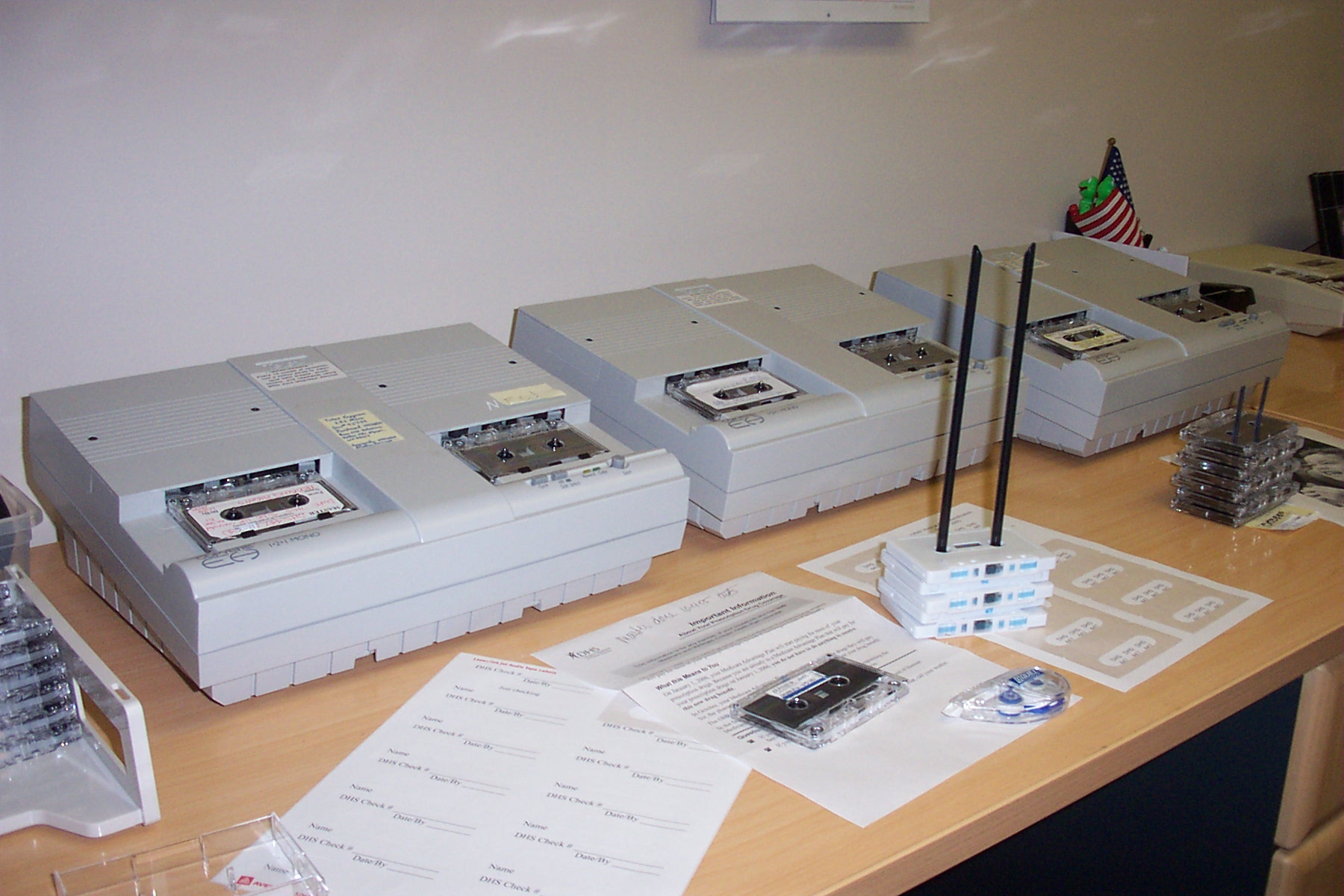That is the question people often ask when having a document transcribed into braille. They are surprised to learn that a simple one page print document can result in many more pages than they expected when it is produced in braille. To find the answer to this question one needs to understand a bit about the idea behind braille.
Braille is a system of raised dots for blind users to read printed material. It is based on a concept similar to Morse code. The dots are arranged in groups or cells. Each cell in braille contains six or eight dots (depending on the country of origin). The dots are arranged in two columns of three (or four) dots each. American and British braille use a six-dot system with each cell being equal to a 29 point font character in print – approximately .4 inches high and .25 inches wide. The size of the dots is standardized and cannot be changed, unlike print fonts that can easily be adjusted with the click of a mouse.
A page of paper used for braille embossing is wider than the standard print page paper. A print page is eight and a half inches wide but a braille page is eleven and a half inches wide. Standard print and braille pages are both eleven inches long. Even with the extra three inches of width on each page, the braille document will include many more pages than the original print document.
There are a couple of reasons that braille comes out so big. The braille dots themselves take up a lot of space, and the way information is formatted on the braille page will also affect this.
Although there is more room across the braille page than the print page, there is only room enough for forty cells of braille per line. So, a complete line of 65 print characters on a print page will not fit on a braille line. In braille, a page can only hold 25 lines of braille information instead of the 55 or 60 lines available on a printed page, so this will also affect the page count.
The other issue is formatting to indicate bolding, paragraphs, columns and headings. The formatting in the braille document will look different than that in the print document. To maximize the usable space, braille formatting rules eliminate unnecessary cells and blank lines. Most of the bold, italics and underlining in the print document is just “eye candy” for the sighted reader and is useless to the braille reader. Since braille doesn’t have different fonts, certain dots added in front of a word indicate italics or bold characters. That takes space. So, if it’s not necessary to convey the meaning of the information, it is not included in the braille version.
Many print documents use block paragraphs with blank lines between each paragraph. Braille uses an indented first line to show paragraph breaks, eliminating the blank line. That helps with space problems, but still isn’t enough to make much of a difference.
Columns present special problems. A simple three-column table (e.g., name, address, phone number) is much too wide for a braille page, so it needs to be rearranged to maximize use of space while still keeping its most usable features.
Major and minor headings are used to help save space. Other formatting tricks are also used to reduce length.
Braille has other features to help save space. In contracted braille, certain letter combinations are grouped together in one or two cells. For example, most braille alphabet letters have a secondary meaning if they are seen alone (e.g., b = but, t = that).
Braille is often embossed on both sides of the sheet of paper. Regardless, you will still have a big, thick braille document compared to the print document.
The average ratio for simple documents is two and a half or three to one. This means that for every print page there will be two and a half to three pages of braille. Complex documents that contain tables, outlines or mathematics can create as many as six braille pages per print page.
For more information on braille code, formatting and other points of interest, please use our glossary.








Speak Your Mind